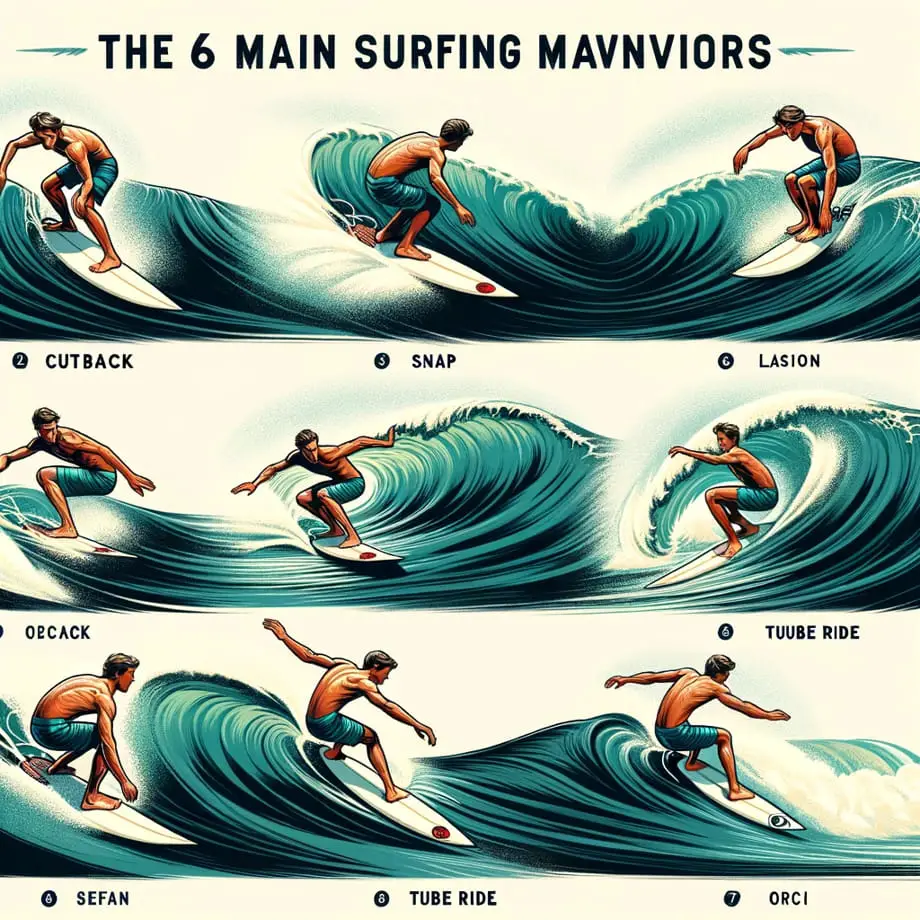The 6 Main Surfing Maneuvers
Surf Maneuvers
At first glance, the possible repertoire of surfing tricks does not seem to be that vast. Torn, Cut-Back, Tube, Floater, Aerial and Beat. There may even be others, but you can be sure that these are the main ones, which will be seen most in championships or free-surfing sessions.
However, we are talking about a relatively new sport - at least its professional side - and constantly evolving. In addition, there are no equal waves, even at the same peak. The wind, the waves, the background, among other factors, greatly influence the formation of waves, so that they are almost like fingerprints, totally different from each other.
For this reason, we can expect that the ideal combination of surfing maneuvers for each wave will always vary. Another factor that draws attention is the possibility of ways that each of them can be executed: more or less aggressive, normal or backside, tubes deeper or less, more up or down, standing or lowered, with the hand in wave or not. Aerials, then, can be performed in thousands of different ways. See, for example, this feat below:
Kelly Slater's Aéreo 540 during a free surf in Peniche, Portugal, in 2014:
Now let's see some examples of the surf maneuvers mentioned above.
1) Torn
It consists in the act of turning the body backwards as if the surfer would turn in the opposite direction of the wave, throwing the tail of the board forward with force by throwing as much water as possible forward. It is the most common maneuver in the championships, for being worth points and not having a level of difficulty as high as an aerial. Some surfers make this movement so violently, leaving the board so crooked, that you can even forget my comment about the difficulty level of this maneuver. =)
2) Beat on the Lip
It is practically a way of making the tear, but with a lot of speed so that it is executed on the lip, the crest of the wave. Thus, the surfer must pick up a lot of speed at the bottom of the wave and go up, practically throwing the front of the entire board out of the wave before turning the body and throwing the tail forward.
3) Cut-Back
It is one of the most classic surfing maneuvers. He dominated the time when the boards were too heavy for aerial and torn. To perform it, the surfer must clearly define the point where the movement will start and where it will end so as not to be swept by the wave in the middle of the maneuver. It consists of a return movement in the opposite direction of the wave, then returning to the normal direction, with lighter and less abrupt movements than the torn and tapped lip. The video below, although in English, shows the movement clearly.
4) Floater
The floater is a much more functional than plastic maneuver. The surfer performs it when the wave section in front of him is going to break. Immediately he searches for the top of the wave and surfs on top of the crest by sliding over the foam until it reaches the face of the wave again.
In this video, Australian surfer Adrian Buchan performs two floaters in a row:
5) Tube
One of the most famous surfing maneuvers, the tube is one of the best sensations that surfing can provide. In this maneuver, the surfer is completely inside the wave and needs to control his speed very skillfully so as not to leave the tube behind, nor be swallowed by the wave, if he goes too slowly. To slow down, the surfer can put his hand on the wave or put more pressure on his back foot. To accelerate, in addition to putting the weight in front, you should make a small zigzag inside the tube, but this can be very difficult if the wave is not big enough.
In 2014, Kelly Slater got a 10-note tube at the Billabong Rio Pro, a stage of the WCT (World Championship Tour), at Barra da Tijuca beach, a beach where this maneuver is not so easy to perform:
6) Aerial
Surely surfing maneuvers is the one that has been evolving the most these days and the favorite of spectators. It is a flight over the wave. To perform it, the surfer must pick up a lot of speed at the bottom of the wave and then go towards the top, completely detaching the board from the wave, returning on the board after finishing the flight. Between the climb and the descent, the surfer can invent whatever he wants, as long as he has enough skill and creativity.
To illustrate the variety of aerials that can be performed in the current surf, we have the video below:
In 2:39 seconds, you can enjoy Gabriel Medina's backflip. How does he do that ???
Frequently Asked Questions
- How do these six main surfing maneuvers vary in terms of difficulty, and what are the foundational skills needed for each?
- Surfing maneuvers vary from basic moves like the cutback to more advanced techniques like aerials. Foundational skills include balance, wave reading, and board control, with complexity increasing as maneuvers require more precision, timing, and agility.

